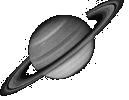|
For those of you with a very solid theoretical background this explanation may seem quite simplified. I`ve done this to make it more readily understood by those who may not be gifted with any formal education in the area.
Okay, before anyone can start to think about going FTL certain things need to be considered. Be it by tachyon propulsion, space-time warping, or any other number of theories, we first must consider everything that we `know`. Main thing to consider when thinking about FTL travel is obviously relativity. That theory going of cource that since mass becomes `infinite` as one aproaches light speed the energy required to reach light speed becomes infinite as well. Well, at least in theory that might not be entirely accurate. While that is a rather bold statement, it is not without proof. Like most theories though mine is based on things which may or may not hold true in the universe at large. Namely the existence of blackholes. While a blackhole has not yet been investigated in depth, we do have some proof of their existence. We cannot of cource by definition see a blackhole in the traditional sense, but we can observe it`s behavior as reflected on the bodies around it. In doing so, our predecessors have reached several conlusions about the behavior of blackholes. The most important to my theory is the basic `rule` that a blackhole contains such a strong gravitational field that it attracts to it everything within a given distance including light. Based on our grasp of physics this shows several things. Firstly that light has mass. Gravity as we know it is the action of one body of a given mass attracting another body of a lesser mass. Obviously by that definition light must have mass. This in itself is somewhat significant in that it shows that matter at some level no matter how miniscule can go the speed of light. This though is not the heart of the theory. That lies in the fact that in order to overcome a certain force, in this case light traveling away from a blackhole at light speed, a force greater than the one to be overcome must be applied. The simple example being that of lifting something and thus overcoming the less powerfull force of the earth`s gravity. This shows that since light is unable to escape a blackhole despite the fact that it is traveling at the `galactic speed limit`, then the force of the blackhole must be strong enough to accelerate matter (which by the very fact that gravity affects light proves that light has) beyond the speed of light. Considering this it becomes clear that one (of many) possible ways to accelerate past the speed of light is to in some way harness the enherint power that gravity posesses to accelerate matter past the FTL barrier. While it is a shody and rather basic theory it does illustrate a plausible senario based on the physics we beleive to be true. The key of cource comes in finding a way to apply it to realistic space travel. |



